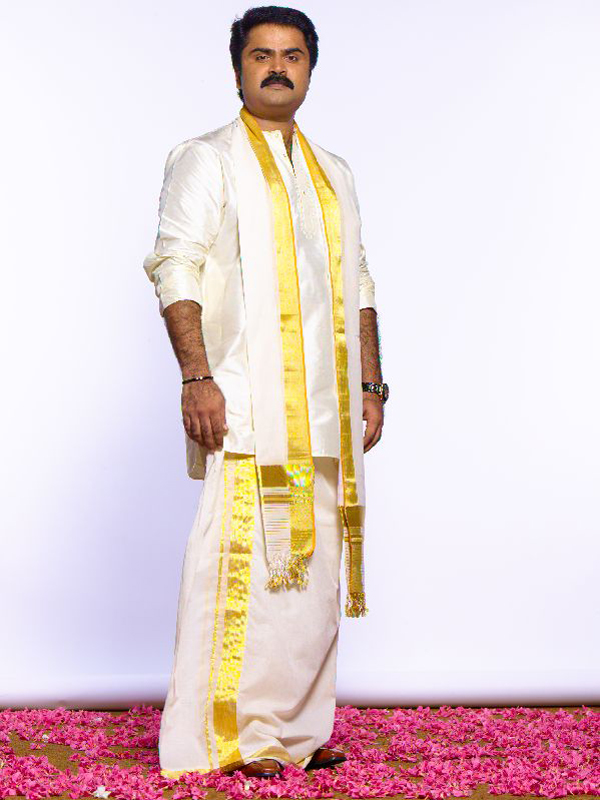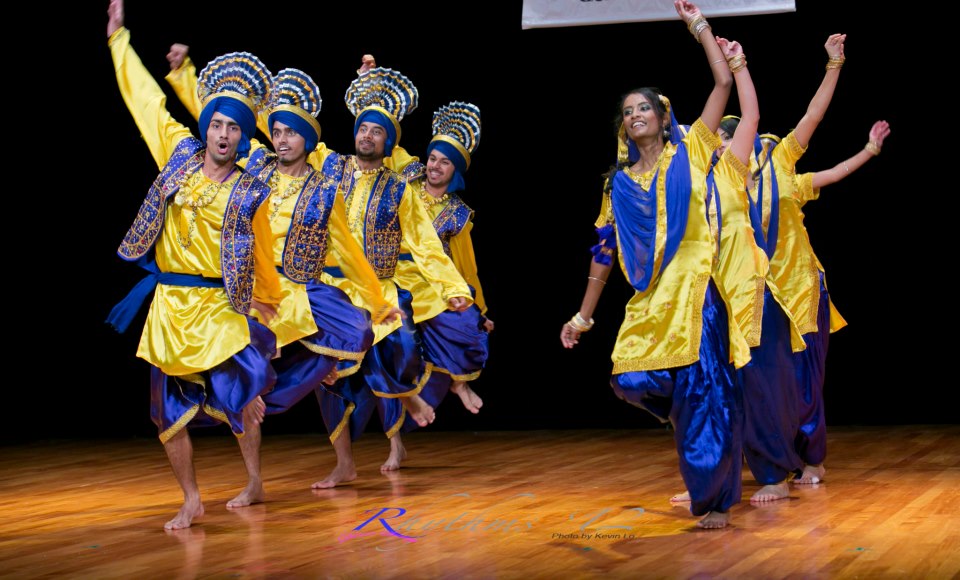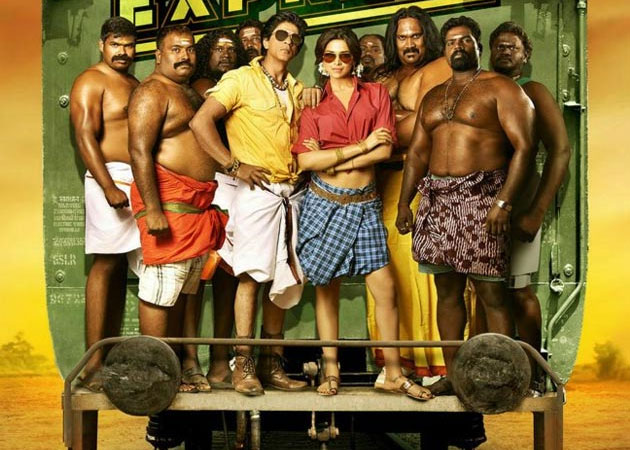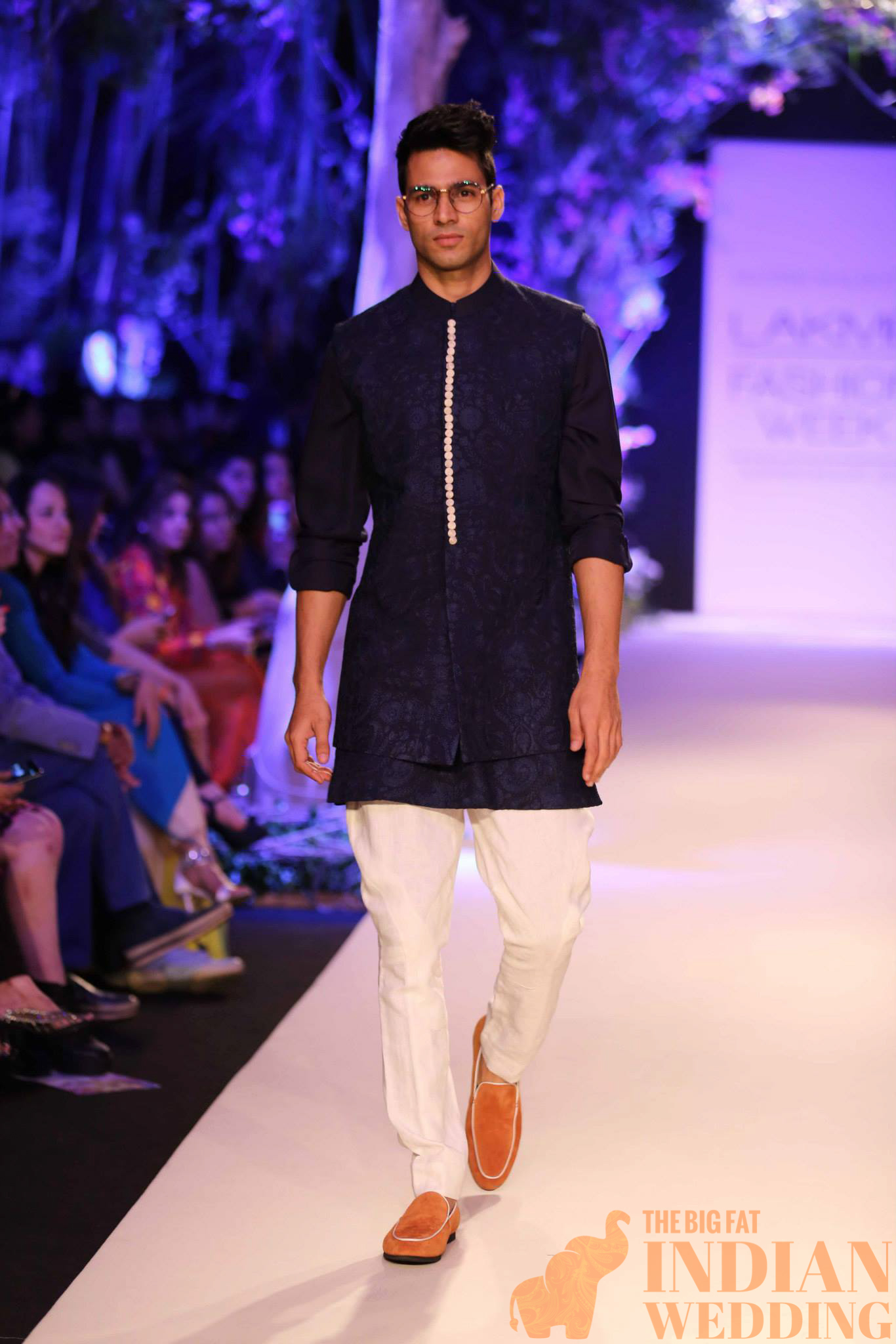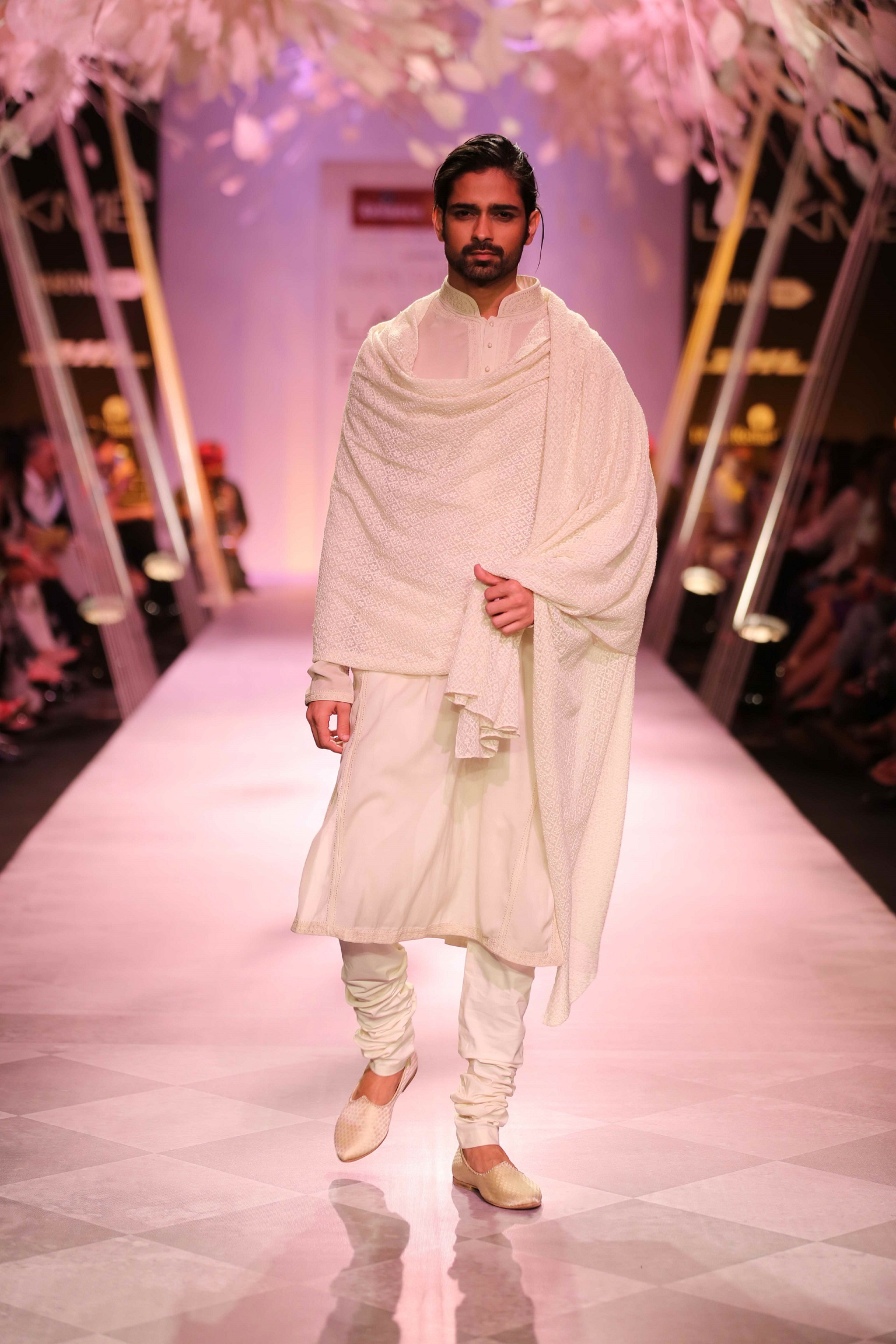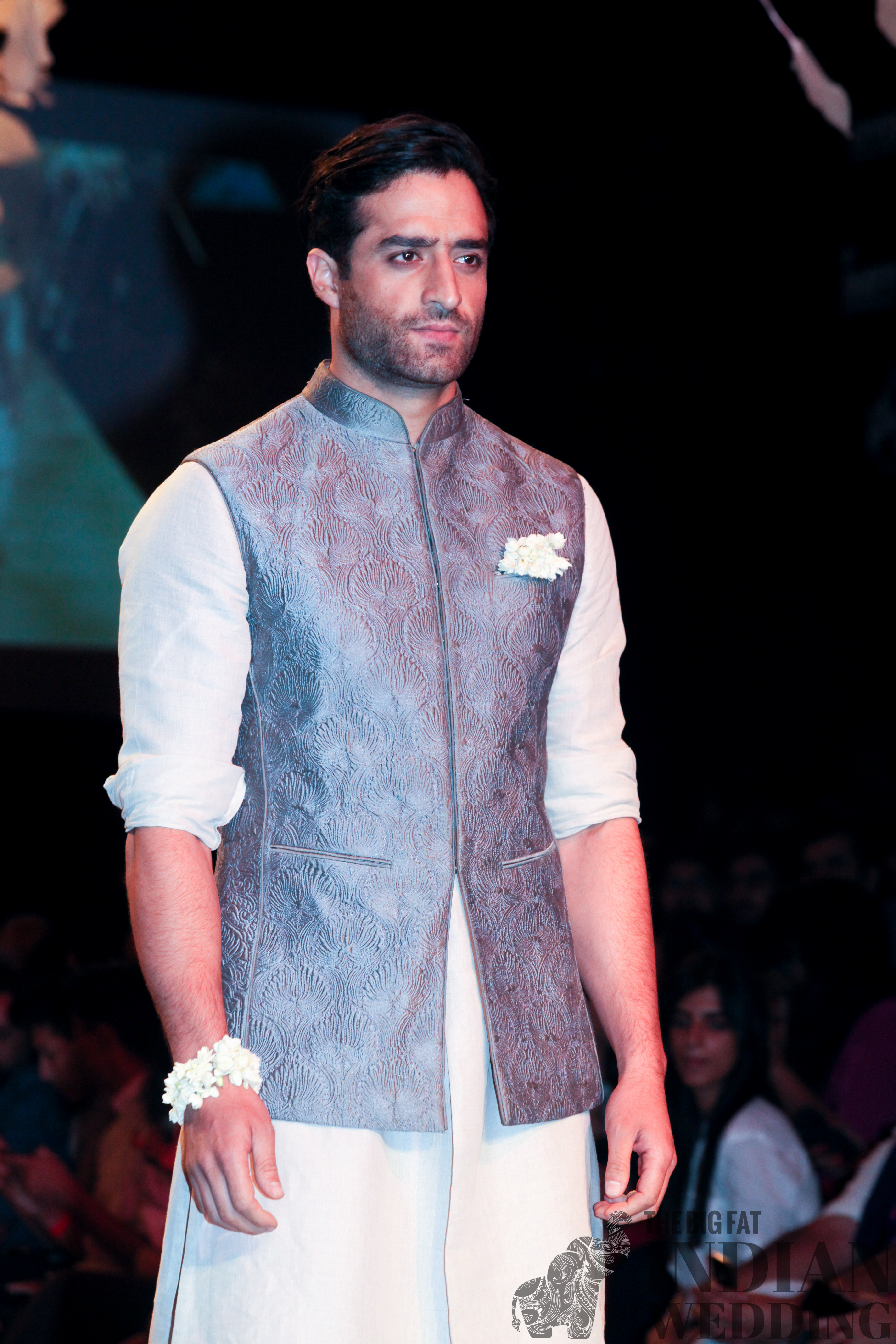There are a variety of men’s pants in South Asia. From dhotis to pajamas, men can dress up or dress down in comfort and style. These pant bottoms are as much apart of personal style as they are about tradition, culture, and utility.
Welcome to the next part in the Ultimate South Asian Style Guide. Today we’re talking about Indian men’s pants. Be sure to check to out the complete series of clothing: shararas and ghararas, lenghas and half-saris, Indian men’s jackets, women’s salwar kameez, 

The pancha, or dhoti, is worn all over the Subcontinent, including in Bangladesh and all of India. It is worn both formally and casually. Recently the dhoti has become a symbol of cultural assertion as both celebrities and public figures have worn it to international occasions.
Dhotis are usually white. A white dhoti with a gold border is often worn for special occasions. Other colors like yellow and saffron come out during special religious ceremonies and weddings in some regions. Many Jain men wear the pancha when the attend temple because their faith requires them to wear unstitched clothing.
Nowadays it is more common to find the long length of fabric is replaced by premade pants with the same look. Both men and women wear this style with kameez and kurta tops to create a variation on the salwar kameez.
Lungi
The lungi pant is created by draping a long length of fabric wrapped around the legs like a tube. The two sides of the lungi are tied at the hip and tucked in. The length can be adjusted easily. In the end the lungi looks a lot like a short wraparound skirt. Men in Bangladesh and South India wear the lungi as part of their everyday outfits and within the culture they demonstrate masculinity.
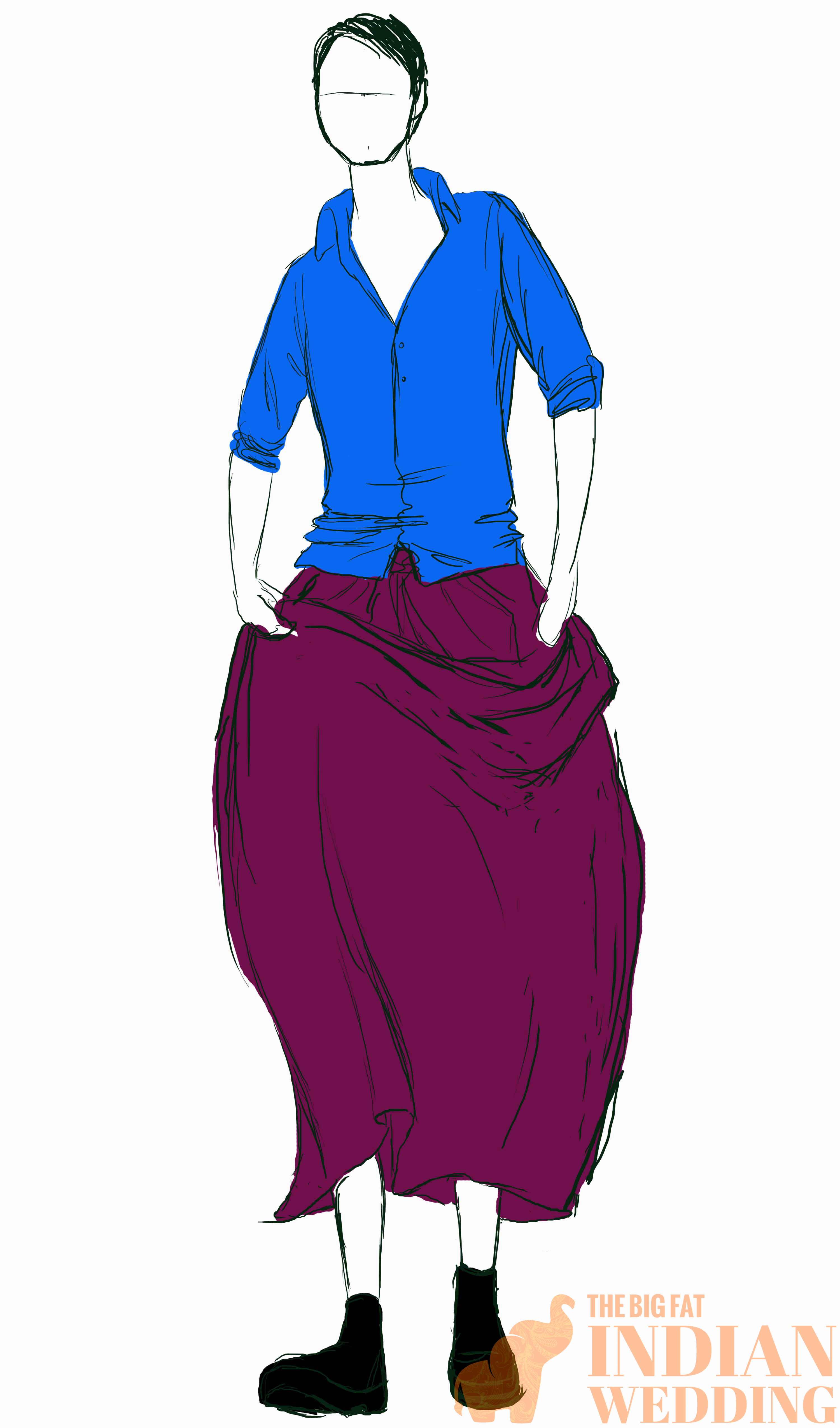
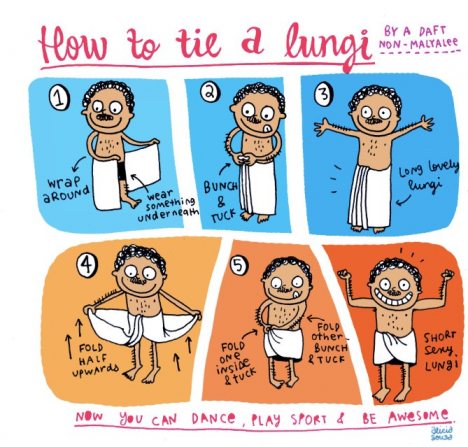
Photo courtesy of Alicia Souza
In Bangladesh, the lungi comes in cotton, silk, and batik and are considered casual wear. Only men wear the lungi though there are some female variations, which look mostly like short saris. Fine lungis are gifted to Bengali grooms at their weddings.
In Kerala, in South India, the lungi is unisex and comes in a vast array of colors. Manual laborers often wear it as working dress since it allows freedom of movement. Formal lungis, called mundus, come in white with gold embroidery and borders. These are worn to weddings and special occasions. Lungis in Kerala are usually tied on the right-hand side and cover the area from waist to knee.
Tamilian lungis, by contrast, are tied on the left. Formal lungis in Tamil Nadu and Andhra Pradesh also come in white and are worn to weddings.
In Karnataka, lungis are worn at all times by the men. They are considered groomswear, everyday casual wear, and formal wear. Finer lungis are made of silk.
Bhangra dancers from Punjab also wear a variation of the lungi for their dance. These lungis can reach down the ankles and are also worn by rural people in the state.
Lungis are often printed and decorated with the traditional designs of the areas where they’re worn. For instance, Sambalpuri patterns are common in Odisha. Most day-wear lungis, though, come in basic colors or with simple checkered patterns.
Recently, Shah Rukh Khan, in his movie Chennai Express, danced in a song called ‘The Lungi Dance.’ It was in homage to Tamil actor Rajinikanth. In it he and Deepika Padukone donned lungis.
Shalwar
The shalwar kameez suit is mostly popular in North India and Pakistan. The shalwar, or salwar, is a loose-fitting pajama-style bottom that is tied to the waist and tapers down around the ankles. It is usually paired with a kameez, or qameez, tunic top.
From Manish Malhotra at Lakme Fashion Week 2014
Formal variations of the salwar kameez are called sherwanis and can include a variety of differently styled pants, including a dhoti-style shalwar. They are usually made of silk and silk blends and embroidered with heavy zari work. Very casual shalwar kameez, made of simple plain cotton, are also worn as pajamas and sleep clothes by men in North India.
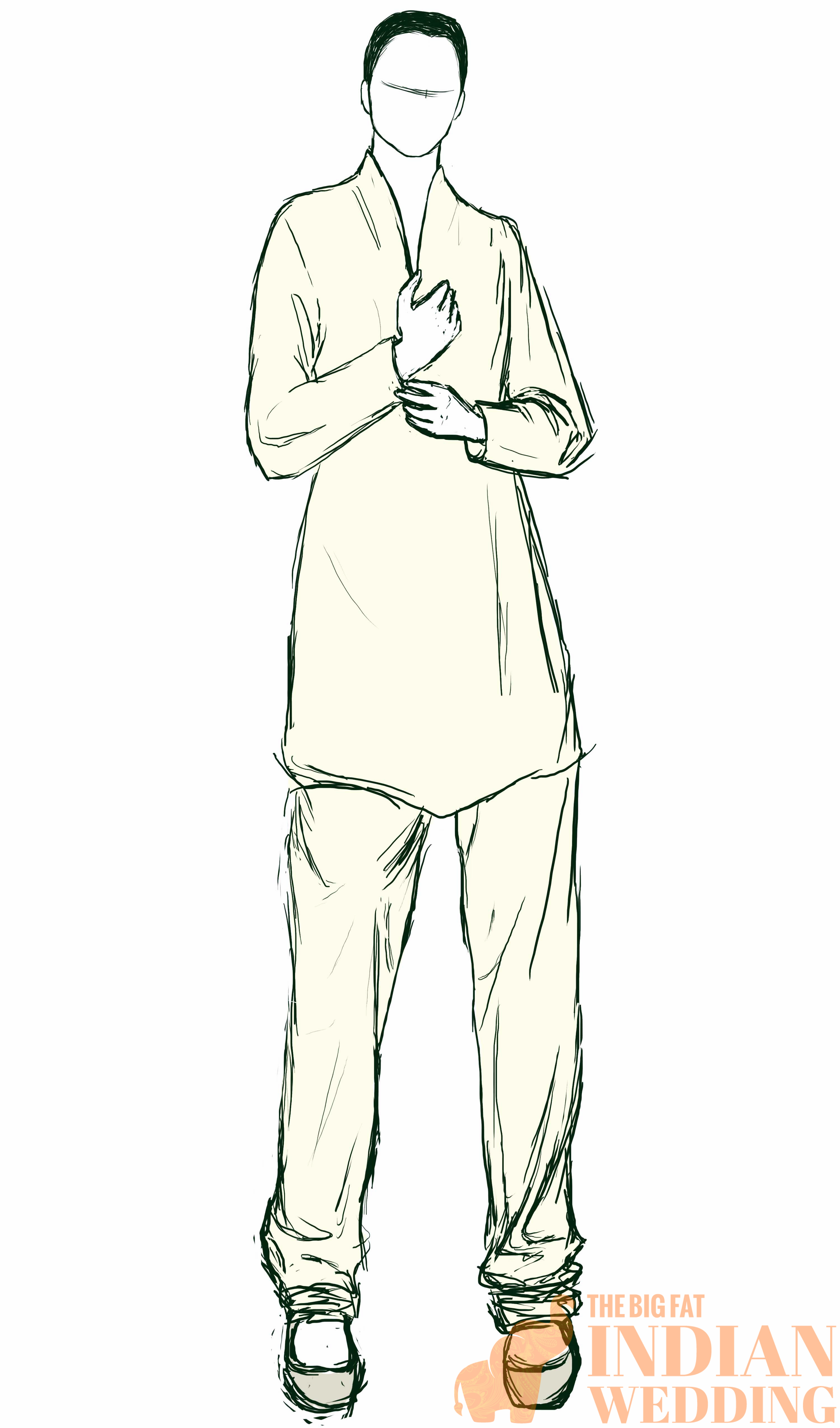
The Mughals introduced the sherwani as court dress. From there it was adopted by the Indian aristocracy. It only trickled down to the common people after Independence. Mohammad Ali Jinnah even made it the national dress of the new Pakistan.
From Tarun Tahiliani at Lakme Fashion Week 2014
Pakistani and North Indian grooms often wear fine sherwanis with shalwar pants, usually accessorized with a turban.
Sherwanis and shalwar kameez are fairly popular among top South Asian designers. Largely the silhouette doesn’t change but many designers add accessories like Nehru jackets and hats.
From Tarun Tahiliani at Lakme Fashion Week 2014
Dhotis, lungis, and shalwar pants are all extremely popular options for South Asian men both at weddings and as part of every day wear. They are versatile, comfortable, and show off the nuances in South Asian culture.


